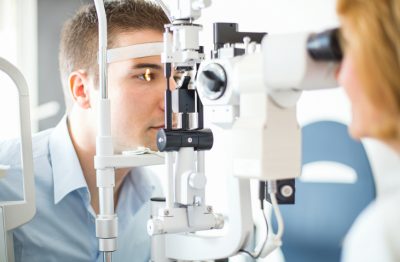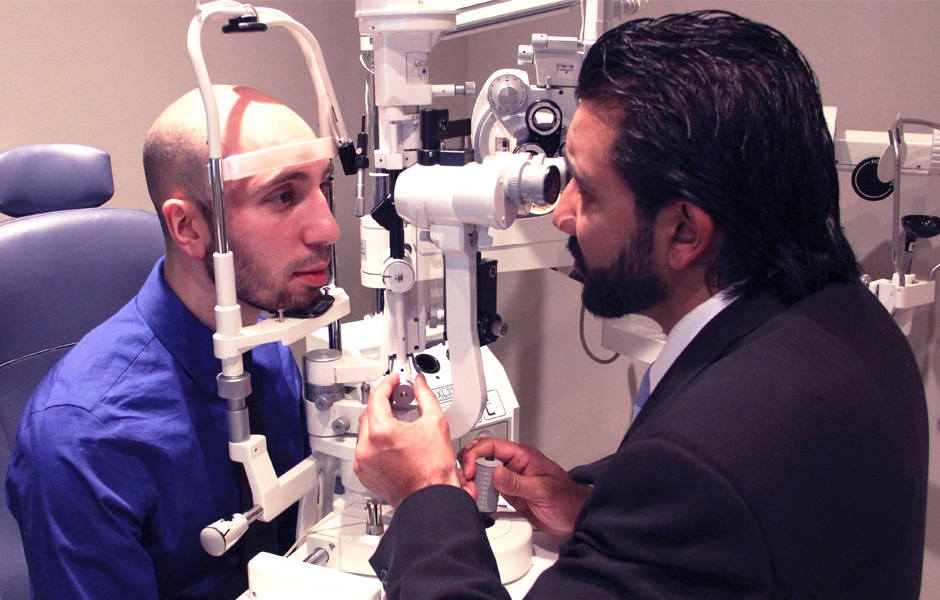Pediatric Eye Care at Andalusia Pediatrics: Taking Care Of Young Eyes
Pediatric Eye Care at Andalusia Pediatrics: Taking Care Of Young Eyes
Blog Article
Understanding the Various Vision Correction Procedures Available for Clearer Sight
In the world of vision adjustment treatments, a wide range of choices exist to resolve refractive mistakes and supply individuals with more clear view. Let's explore the intricacies of these treatments and dropped light on the course to attaining improved vision clarity (Neurologist Andalusia).
LASIK Surgery
LASIK surgical procedure is an usual refractive treatment used to deal with vision troubles such as farsightedness, astigmatism, and nearsightedness. This surgical method, which stands for Laser-Assisted in Situ Keratomileusis, intends to reshape the cornea to improve how light is concentrated on the retina, ultimately enhancing vision clarity. Throughout the treatment, a slim flap is produced on the cornea, and a laser is utilized to remove accurate amounts of cells to improve it suitably. This improving permits light to be accurately concentrated onto the retina, dealing with refractive errors.
Among the primary benefits of LASIK surgical procedure is the fast renovation in vision experienced by people. Lots of people see a significant enhancement in their eyesight right away after the procedure. Furthermore, most individuals report very little pain and discomfort throughout the surgical procedure and healing duration. The recuperation time for LASIK is fairly fast, with many people going back to their daily tasks within a day or 2 post-operation. In general, LASIK surgical treatment is a popular choice for individuals looking for a long-lasting solution for their vision issues.
PRK Treatment

PRK is an appropriate option for people with thin corneas or those at a higher threat of eye injuries, as it does not entail producing a corneal flap. The recovery process for PRK is a little longer contrasted to LASIK, as the epithelium requires time to regenerate. People might experience pain and blurry vision for a few days following the procedure.
In spite of the longer recuperation time, PRK can yield exceptional cause vision enhancement, making it a beneficial alternative for those that may not appropriate candidates for LASIK surgical procedure. - Andalusia Pediatrics
Implantable Lenses
As opposed to PRK where the cornea is improved directly, implantable lenses provide an additional technique for fixing vision by inserting artificial lenses inside the eye. This procedure is especially useful for people with high degrees of farsightedness, astigmatism, or nearsightedness who might not be appropriate prospects for laser surgeries like LASIK or PRK.
Implantable lenses, additionally referred to as phakic intraocular description lenses, work by supplementing the eye's natural lens with a man-made one. These lenses can be put before the natural lens (former chamber) or behind the iris and in front of the natural lens (posterior chamber) By changing the power and positioning of these lenses, eye doctors can successfully correct refractive mistakes and enhance visual skill.
One advantage of implantable lenses is that they are detachable and exchangeable, offering flexibility for future adjustments. Nonetheless, just like any type of procedure, there are dangers entailed, such as infection or cataract development. People thinking about implantable lenses must consult with an eye treatment professional to determine the most appropriate alternative based on their private demands and eye health and wellness.
Corneal Rings

The procedure for putting corneal rings is minimally invasive and relatively quick, commonly performed as an outpatient treatment. During the surgical treatment, the eye doctor makes a small laceration in the cornea and inserts the rings at a specific deepness. When in area, the rings help to improve the cornea, offering a smoother surface area for light to get in the eye, which can result in more clear vision.
Corneal rings are considered a reversible procedure, as they can be gotten rid of or replaced if needed. While they might not entirely eliminate the need for glasses or get in touch with lenses, corneal rings can dramatically improve vision high quality and general aesthetic convenience for people with keratoconus or various other corneal irregularities.
Refractive Lens Exchange
Adhering to the improvement of corneal irregularities with treatments like corneal rings, an additional vision modification method that can deal with refractive mistakes is Refractive Lens Exchange (RLE) RLE is a surgery that involves changing the eye's all-natural lens with an artificial intraocular lens (IOL) to correct refractive errors such as farsightedness, presbyopia, and nearsightedness. This procedure is particularly useful for individuals who may not appropriate prospects for treatments like LASIK or PRK due to factors such as thin corneas or high refractive errors.
Healing time for RLE is relatively fast, and individuals can anticipate improved vision quickly after the treatment. As with any type of surgical treatment, potential dangers and problems exist, so a complete assessment with an eye care expert is necessary to figure out if RLE is the right vision correction alternative.
Verdict

In the realm check out this site of vision adjustment procedures, a plethora of choices exist to resolve refractive errors and supply individuals with more clear view.LASIK surgical procedure is a common refractive procedure made use of to correct vision troubles such as farsightedness, nearsightedness, and astigmatism.While likewise an usual refractive treatment, the PRK (Photorefractive Keratectomy) technique varies from LASIK surgery in its approach to dealing with vision troubles.Following the modification of corneal irregularities with procedures like corneal rings, an additional vision adjustment method that can attend to refractive errors is Refractive Lens Exchange (RLE) LASIK surgery, PRK procedure, implantable lenses, corneal rings, and refractive lens exchange are all alternatives that can deal with various vision issues.
Report this page